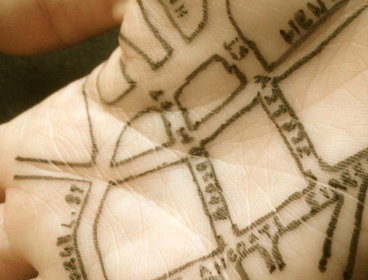
Window on the World
Windows
Windows allow us a view of what is going on in the world where we are, even if we can’t get outside to experience it for ourselves. The view from our window depends so much on where we are, the size of the window we are looking out of, and the direction of gaze it frames. But there is a lot we can see and learn about the world and our tiny part of it from inside our homes. We all have windows to look out of and for many of us during lockdown, they provided a way of connecting with the outside world when access was limited. Even post-lockdown, windows offer a constant way to engage with the world beyond and many of these activities can be carried out with classroom and school windows in mind, rather than just home.
Teacher Notes
Children have limited access to their outdoor environments for many reasons that include parental perceptions of stranger danger, traffic, physical barriers, and restricted areas that curb their range, coupled with the opposing lure of indoor activities from computers and television. In 2020, a new phenomenon had an even greater impact: the Covid 19 pandemic brought about the introduction of ‘lockdowns’ in which travel, and access to familiar places was severely limited. For many children this mean more time spent in the home environment, time away from school from friends and from their usual play places and shopping venues.
Whilst the rule of daily exercise was in place during the lockdown periods, the amount of time that children spent out of doors may have increased or decreased because of many factors such as garden, family size and parental work patterns. It is likely though that many children had opportunities to look out of a window and may have noticed changes in their outdoor world. Learning how to experience, record and analyse the world through such an everyday resource can be empowering for children and will nurture curiosity.
There are a range of suggested activities as well as extension ideas; select and develop the ones that best suit your needs. Some suggested vocabulary is provided but this will need developing. As pupils investigate human and physical features of the outdoors, there is a potentially large vocabulary to develop and grow. In addition, in thinking about aspects of the natural world such as wildlife and trees for example, there are many precise noun names which may require teaching. For example, in spotting birds seen through windows, pupils should learn the names of a few everyday garden birds such as Robin, Sparrow, Pigeon, Blackbird etc.
Fieldwork really matters, and Brace (2021) reiterates powerful points about its value. There are opportunities here to develop fieldwork, either just around the school or in the wider locality.
Key Questions
What can I see through my window?
Where is this window?
What direction does it face?
What human and physical features are there?
What is happening?
What is the weather like?
What can I hear?
What time of day is it?
What day of the week / time of the year is it?
Which window in my house has the best view and why?
Presentation: Window Lesson 2 (see PPT Stay Home 2 Window on the World)
Getting Started
If you can, arrange children in class so that everyone can look out of a window and ask them to describe what they can see and hear. You might model some data recording techniques and use a compass to think about the window orientation and a clock to note the time of day. Then ask children to recall and talk about the view from a window at their house. You might prime this conversation by asking children to spend a minute looking through a window and either drawing or jotting down what they can see as a homework activity.
Possible Activities
Direction
Use a compass to check the direction of view. Use a mapping programme to locate ‘home’ and identify the direction of North on a plan view. Use this to create a personalised map or plan view of ‘home’ and mark its key windows. Annotate the map or plan with information.
Observations
Draw or photograph the view through a window. Identify and name human and physical features.
Watch through the same window at different times of day and gather the same data each time, such as: the number of cars passing in a minute, birdsong heard, noting what people are doing or how many walk past. Discuss how the view from a window at home has changed or is changing and why. Think about different timescales e.g., a day, a week, seasons.
Haiku
Ask children to use descriptive vocabulary of a view to create a Haiku, a poem of three lines, which has a pattern of five, seven and five syllables for each line. Haiku traditionally are about the natural world but work well capturing the essence of built environments too.
Favourite window
Ask children to explain the view through their favourite window and say which room it is. Ask then to think about giving as much geographical vocabulary in their answer as possible and to illustrate this with a map showing the direction of view.
Comparing views
Compare views between windows in the same house and between windows in different houses, this could be a general class comparison, or children could work in pairs or groups to discuss and communicate similarities and differences between their home window views. Use maps of the local area to discuss differences.
Lockdown views
Talk about the kinds of changes that took place during periods of lockdown and how this affected children’s views through their windows. Discuss the reasons for change and create a table giving a description of what changed and whether it was for the better or worse. Compare pupils’ feelings about changes they witnessed: for example, were there some changes that most of them thought were a good thing?
Looking out, looking in
We look out and in through windows. Looking at different types of windows and their patterns can tell us a lot about buildings such as when they were built. Carry out some fieldwork investigation in the local area to identify different windows, if it is appropriate to do so, take photographs and create a collection. For example, public buildings such a supermarkets and libraries are more appropriate to photograph than people’s houses, though sketches could be made of these.
Rainbow Trail
During the pandemic, many people put signs in the window thanking the NHS; many of these were rainbows. Some families put Teddy Bears in windows. Did pupils’ families do this? Do any windows in their street or in the neighbourhood still have signs in the window? Create a fieldwork trail to investigate.
Taking it further
Create a series of images to tell the story of change over time through one window. Use the storybook ‘Window’ by Jeanne Baker as a stimulus for this work.
Use the images on the Presentation to discuss unusual windows in other places, rural and urban and create your own collection of interesting windows. Where else might you find windows apart from in buildings? Think about transport and the kind of views you might get from different types.
Vocabulary (See Stay Home 2 Window on the World Vocabulary)
NC links KS1 and 2 Geography
KS1
Pupils should:
understand basic subject-specific vocabulary relating to human and physical geography and begin to use geographical skills, including first-hand observation, to enhance their locational awareness.
-
use basic geographical vocabulary
-
use aerial photographs and plan perspectives to recognise landmarks and basic human and physical features; devise a simple map; and use and construct basic symbols in a key
-
use simple fieldwork and observational skills to study the geography of their school and its grounds and the key human and physical features of its surrounding environment.
KS2
Pupils should:
describe and understand key aspects of:
human geography, including: types of settlement and land use,
-
use the eight points of a compass, four and six-figure grid references, symbols and key (including the use of Ordnance Survey maps) to build their knowledge of the United Kingdom and the wider world
-
use fieldwork to observe, measure, record and present the human and physical features in the local area using a range of methods, including sketch maps, plans and graphs, and digital technologies.
Links to other Areas of learning
English: reading, writing and annotating; Haiku poetry
Mathematics: data handling
Art and Design: drawing the view
History: identifying change and using evidence to support this
About the Project: stories
During these extraordinary times, our homes have never been more important. Through the ‘Stay Home’ collecting project the Museum of Home in East London is inviting people across the UK and beyond to submit images, written words, audios and videos of their experiences of home during the COVID-19 pandemic.
About the Project: maps
The Mapping Home strand of the ‘Stay Home’ project is asking children and young people to draw a map of home. By asking them to express these spaces on paper, we hope to gain a better understanding of how their experience of the home space may have changed during the COVID-19 restrictions. The maps act as a tool for supporting children and young people in sharing knowledge of their unique experiential expertise of COVID-19 onto paper.
We should seek improved learning outcomes, promote more environmentally sustainable activities, provide more numerous experiences, be they near or afar, and – not least – ensure that fieldwork is a positive experience for all young people.
Brace, S. (2021) Covid: Can school geography field trips recover? | Tes News
Catling, S, Greenwood, R. Martin, F, Owens, P. (2010) Formative experiences of primary geography educators (PDF)
Submit your maps
Please submit your Stay Home maps through www.rgs.org/stayhome – we are really interested to see what you have created!






